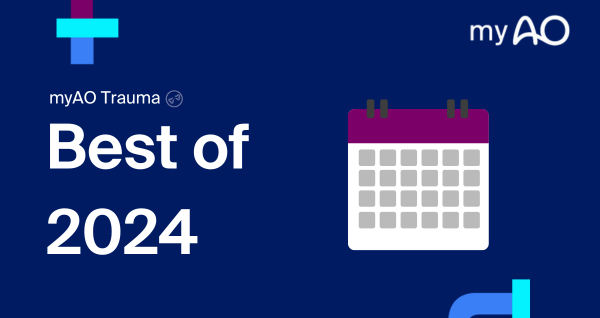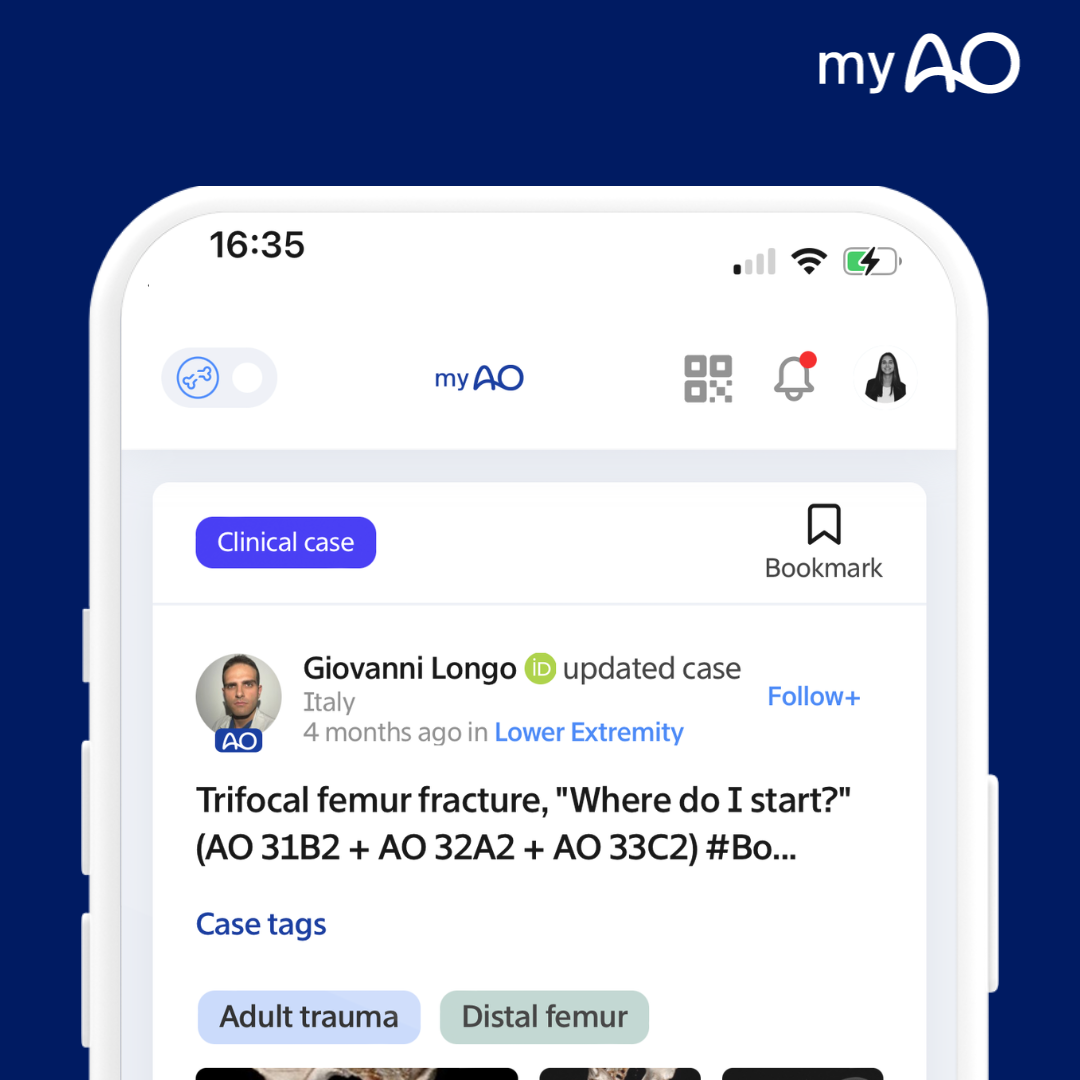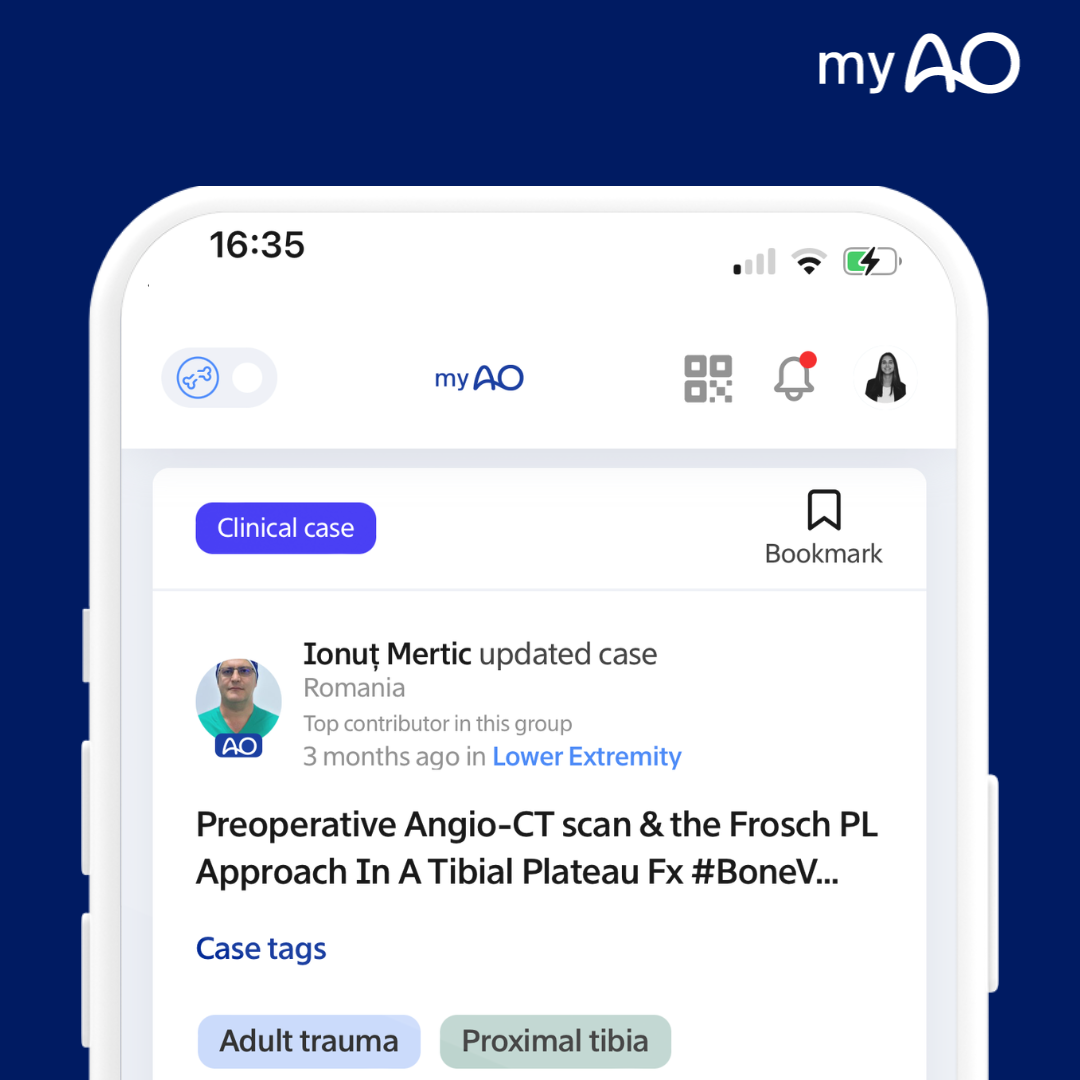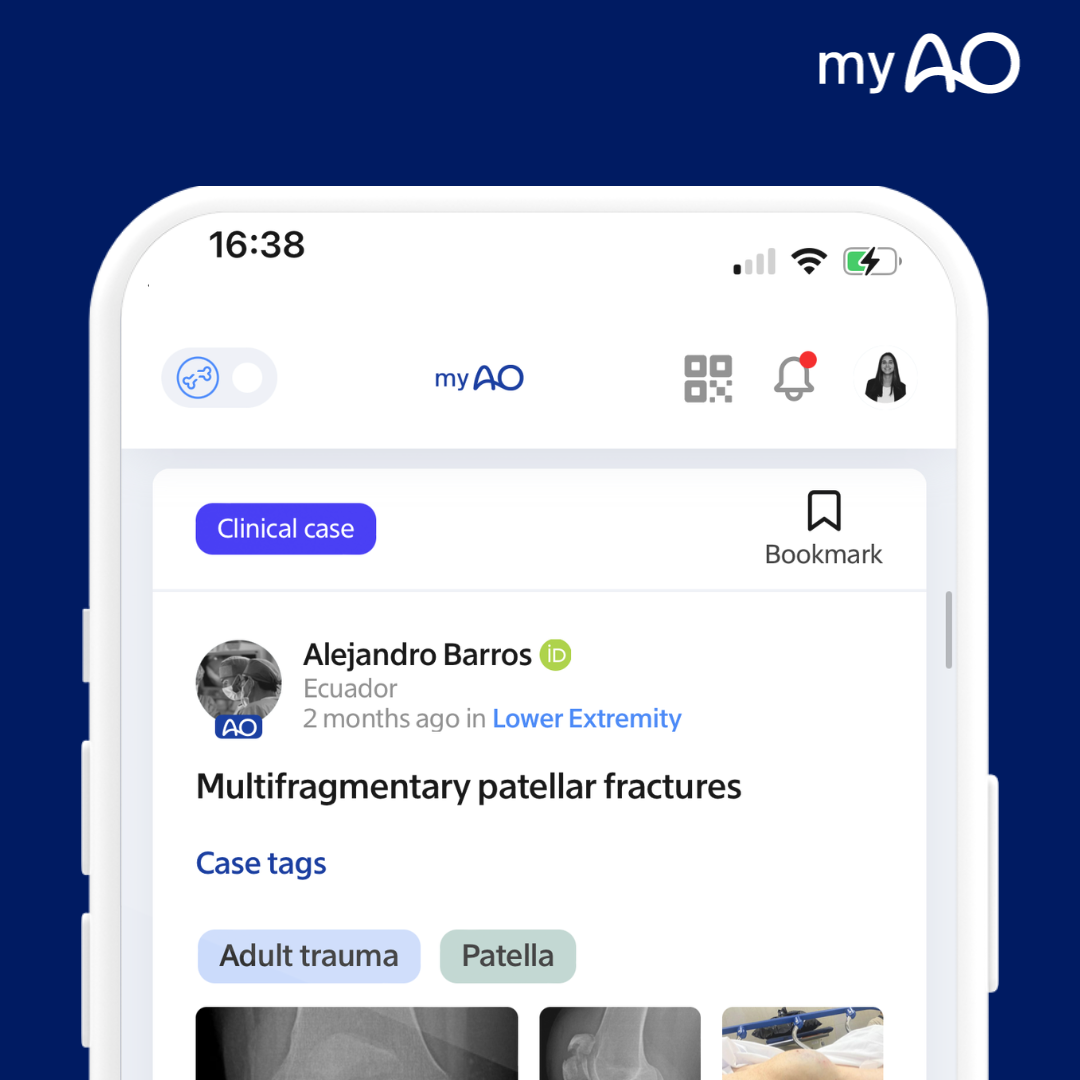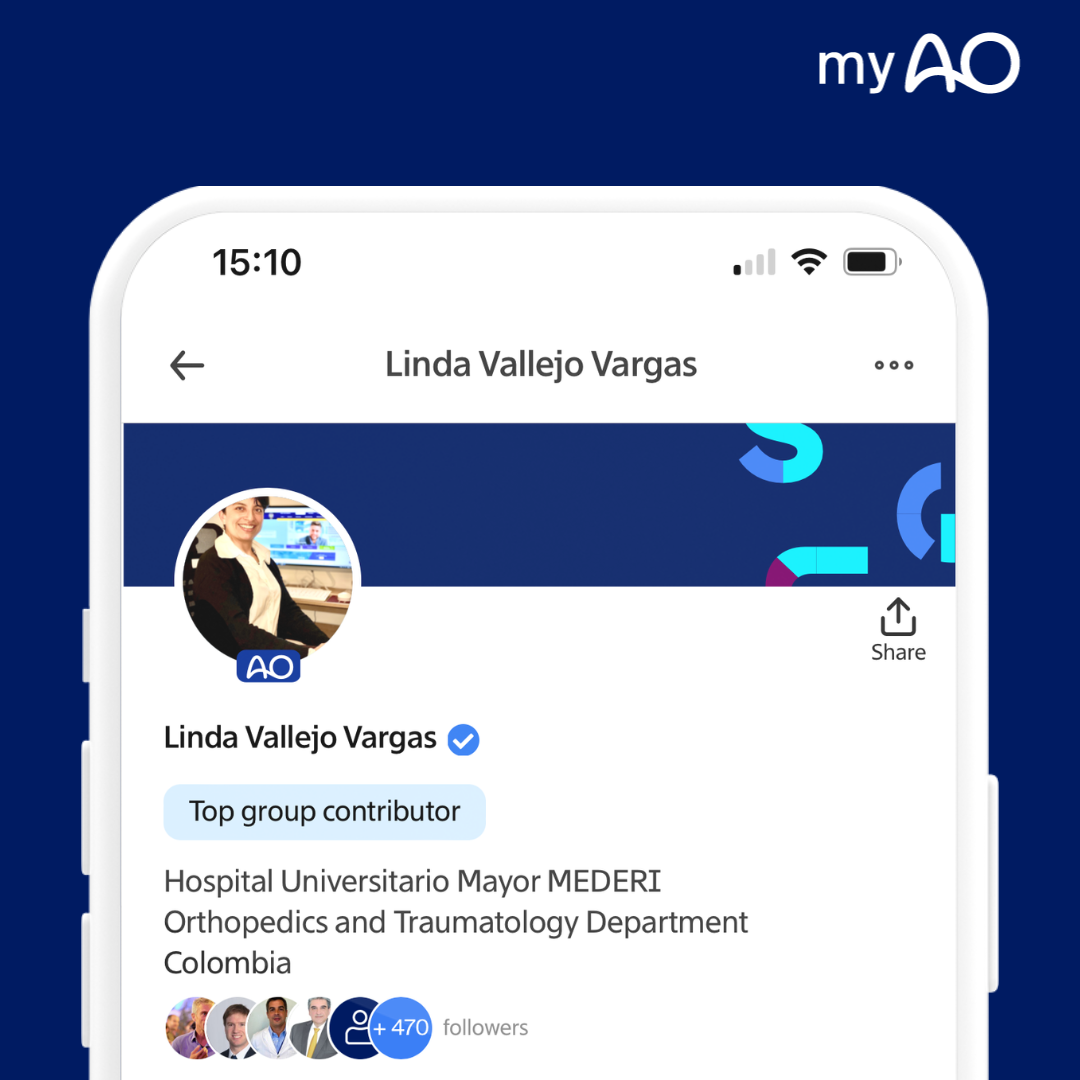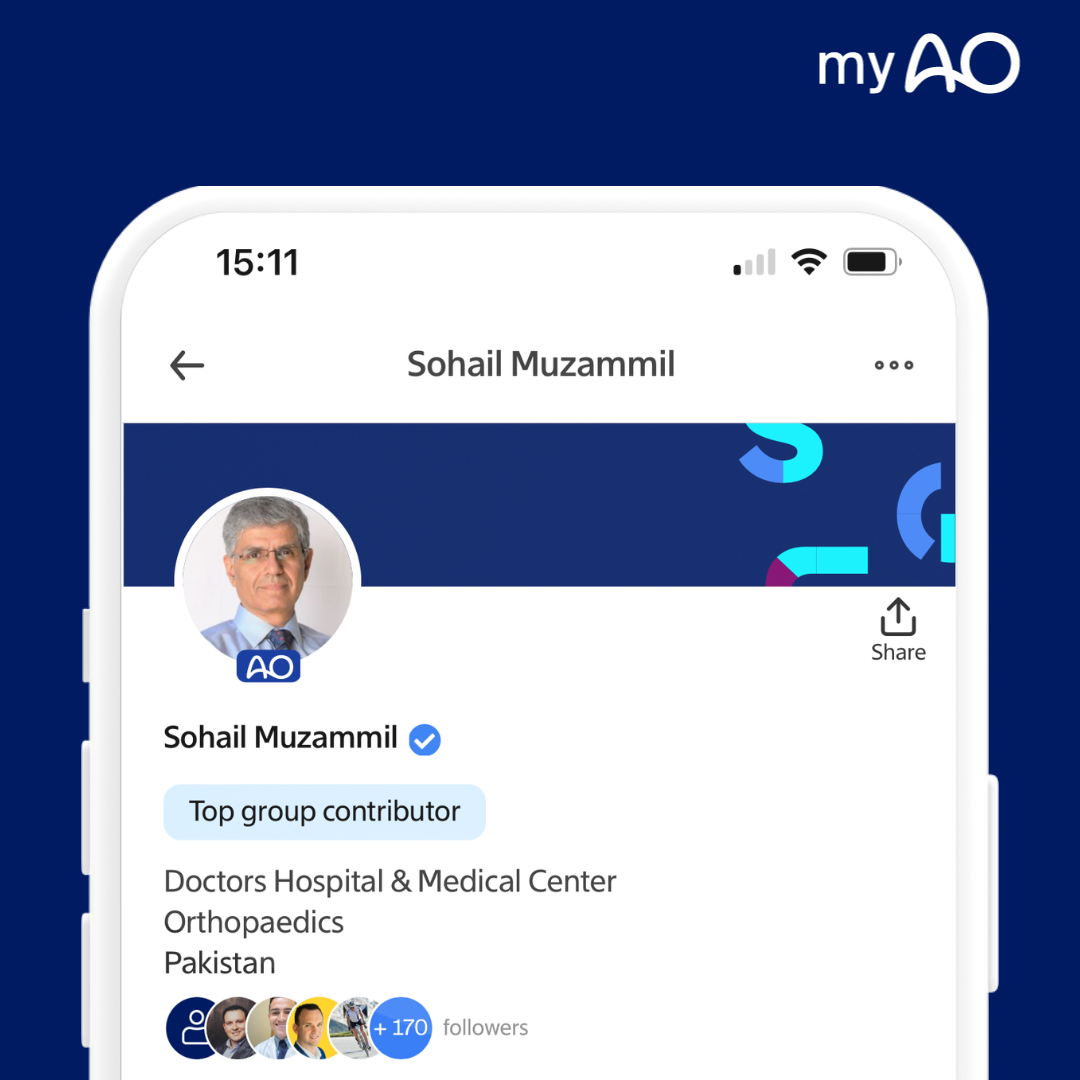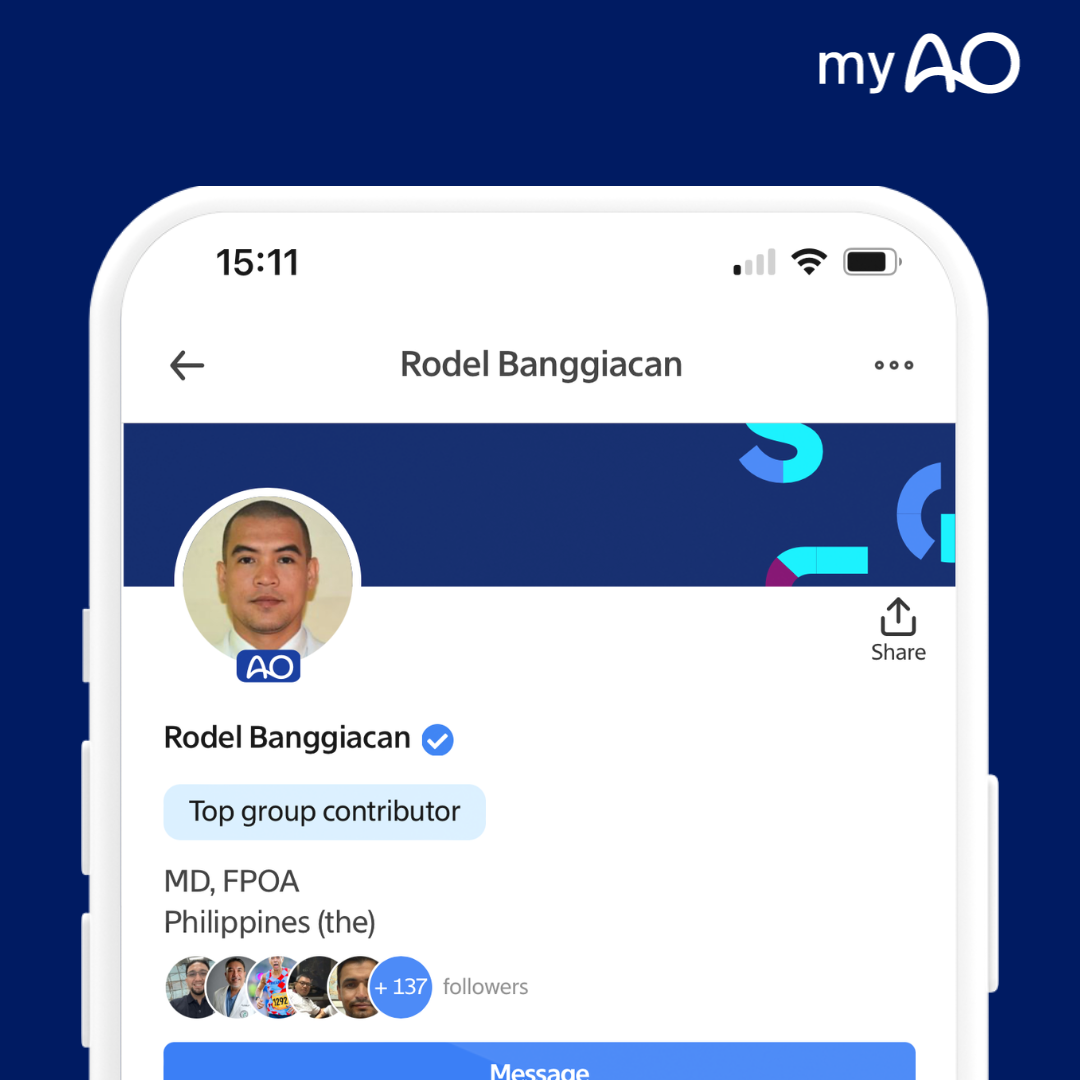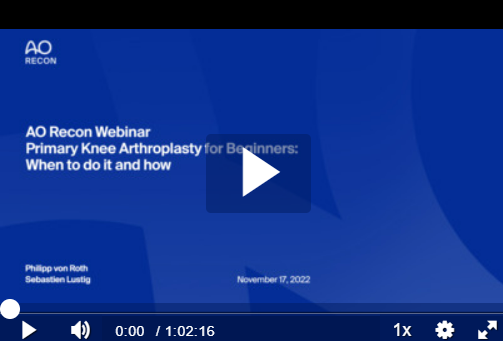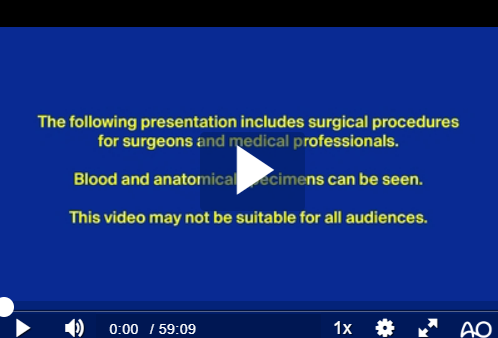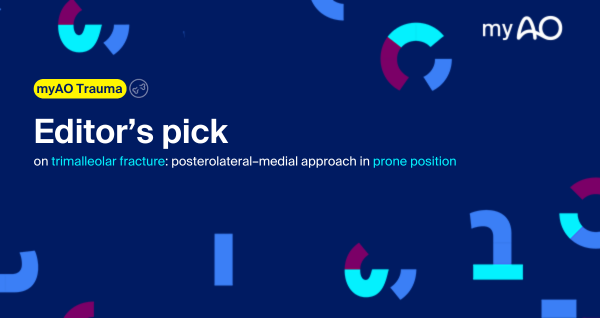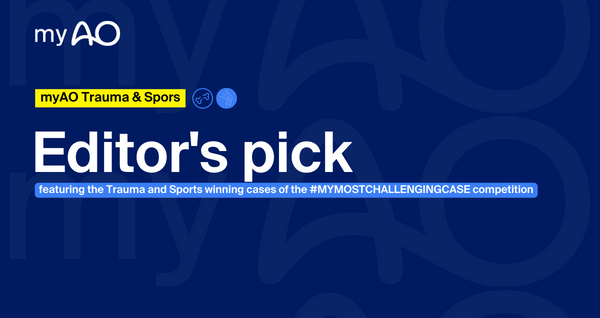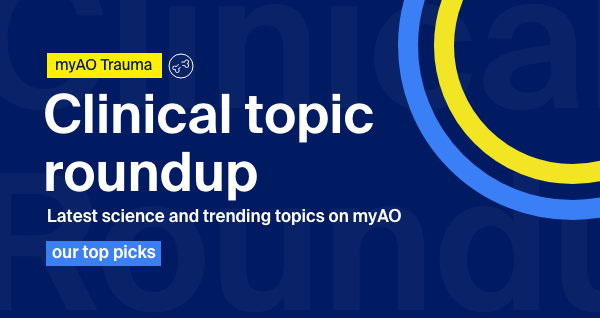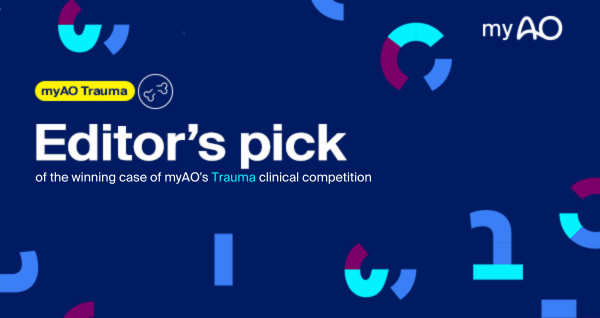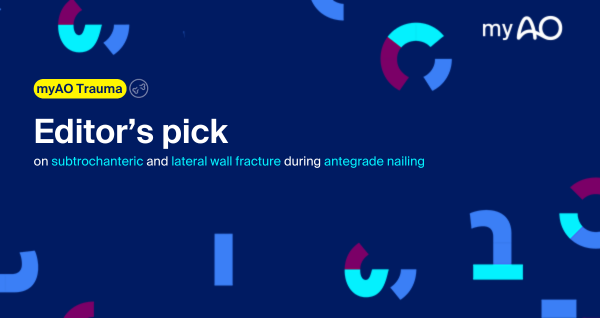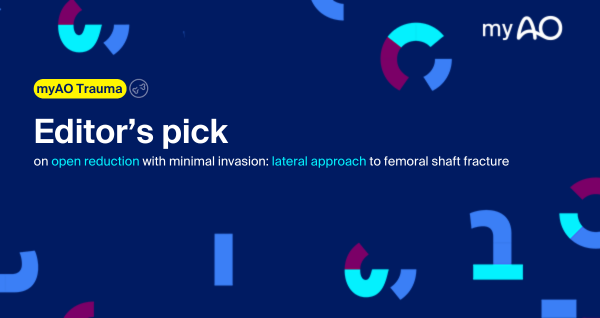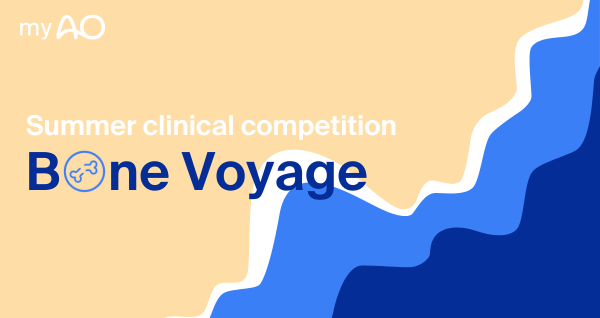Orthopedic Trauma and Reconstruction
- myAO Editor’s Pick on trimalleolar fracture: posterolateral–medial approach in prone position In this month’s Editor’s Pick, myAO is featuring a case on trimalleolar fracture which was […]
- #MYMOSTCHALLENGINGCASE winners spotlight in myAO’s Editor’s Pick In this month’s Editor’s pick, myAO is featuring the Trauma and Sports winning cases of the #MYMOSTCHALLENGINGCASE competition, submitted by Alexander […]
June 2022
The surgical treatment of sports injuries and other soft-tissue conditions around the joints are closely related to classical orthopedic and trauma surgery, however, many innovative techniques for prevention, repair, and reconstruction require specific specialization to achieve excellence in patient outcomes.- myAO Editor’s Pick on complex distal femur intraarticular fracture In this month’s Editor’s Pick, myAO is featuring the winning case of the myAO Trauma competition. We […]
- For this month’s Editor’s Pick, our editorial team has selected a case posted by Carlos Moreno-Castillo, from Chile, in the AO Elbow Group. The case deals with a 19-year-old male patient, […]
- myAO Editor’s Pick on subtrochanteric and lateral wall fracture during antegrade nailing In this month’s Editor’s Pick, myAO is featuring a case on Iatrogenic proximal femur […]
- myAO Editor’s Pick on open reduction with minimal invasion: lateral approach to femoral shaft fracture In this month’s Editor’s Pick, myAO is featuring a case on […]
July 2023
Take part in the myAO Trauma clinical case competition and win the chance to have your clinical case featured on the "Editor's Pick" email communication that will be sent in August to like minded trauma surgeons on myAO!December 2022
Review the most viewed videos, active groups and read articles that you, together with the myAO network, found as interesting over the year.

